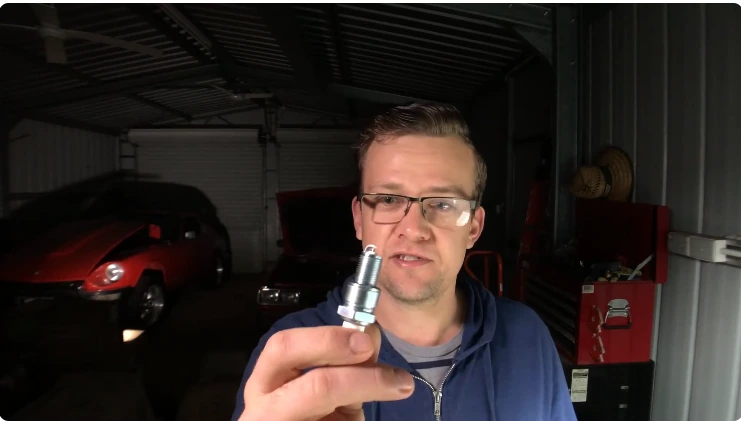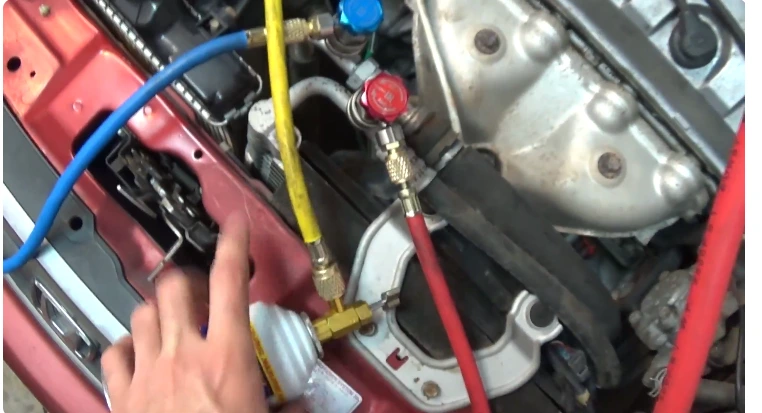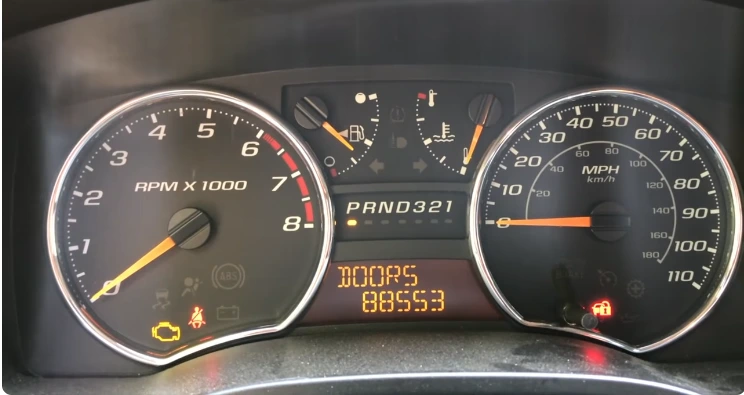How Many Spark Plugs Do I Need? [Expert Advice]
You typically need one spark plug per cylinder in your engine. A spark plug is a vital component that ignites the air and fuel mixture to start the combustion process.
Without the correct number of spark plugs, your engine may not run efficiently or may not start at all. Therefore, it is important to ensure that you have the right number of spark plugs for your specific engine configuration.
Importance Of Proper Spark Plug Selection
Ensuring optimal performance and efficiency:
- Proper spark plug selection is crucial for maintaining the optimal performance of your vehicle.
- The spark plug is responsible for igniting the air-fuel mixture in the combustion chamber, allowing your engine to run smoothly.
- Using the correct spark plug ensures that the ignition process is efficient, resulting in improved power and performance.
Avoiding engine misfires and damage:
- Choosing the right spark plug can prevent engine misfires, which can lead to poor engine performance and damage over time.
- Using the wrong spark plug can cause incomplete combustion, leading to misfires and potentially harmful effects on your engine.
- A misfiring engine may experience reduced power, rough idling, or even stalling, indicating the importance of proper spark plug selection.
Maximizing fuel economy:
- Proper spark plug selection can also contribute to maximizing fuel economy.
- By using the correct spark plug, you can ensure consistent combustion, resulting in efficient fuel utilization.
- A well-matched spark plug will facilitate a cleaner burn, minimizing fuel wastage and ultimately saving you money at the pump.
Remember, choosing the right spark plug is not a one-size-fits-all solution. Consult your vehicle’s manufacturer or a trusted automotive professional to determine the recommended spark plug type and specifications for your specific make and model. By investing in the proper spark plugs, you can optimize your vehicle’s performance, avoid costly engine damage, and maximize fuel efficiency.
Factors To Consider When Determining The Number Of Spark Plugs Needed
When it comes to spark plugs, determining the right number for your engine is crucial for optimal performance. Several factors play a role in this decision, including the engine type and configuration, cylinder count and layout, and manufacturer recommendations. Let’s delve into each of these factors to help you understand how to determine the number of spark plugs you need.
Engine Type And Configuration
The type and configuration of your engine are essential factors to consider when determining the number of spark plugs required. Here are some key points to keep in mind:
- Engines can be classified as either inline or v-shaped. Inline engines feature cylinders arranged in a line, while v-shaped engines have cylinders arranged in a v formation.
- Inline engines typically require one spark plug per cylinder, as each cylinder has its own combustion chamber.
- V-shaped engines can have either one or two spark plugs per cylinder. Some engines have two spark plugs to promote more efficient combustion and improve overall performance.
- The configuration of your engine will influence the number of spark plugs needed, so it’s important to consult your vehicle’s manual or speak to a mechanic to determine the exact requirements.
Cylinder Count And Layout
The number and layout of cylinders in your engine also play a significant role in determining the correct number of spark plugs. Here are a few points to consider:
- Engines can have varying cylinder counts, from as few as two cylinders to over 12. The most common configurations are four, six, and eight cylinders.
- Each cylinder requires a spark plug for ignition, so the number of cylinders directly corresponds to the number of spark plugs needed.
- The layout of the cylinders can also impact the number of spark plugs required. Some engines have cylinders arranged in a straight line, while others may have a more complex arrangement, such as a v shape or even a radial pattern.
- Again, consult your vehicle’s manual or seek expert advice to determine the exact number of spark plugs required based on your engine’s cylinder count and layout.
Manufacturer Recommendations
To ensure the optimal functioning of your engine, it is crucial to follow the manufacturer’s recommendations regarding spark plug quantity. Manufacturers thoroughly test their engines to determine the ideal spark plug configuration. Consider the following:
- Manufacturers may specify the number of spark plugs required for each engine model and variant.
- They may recommend specific spark plug brands, heat ranges, and electrode configurations.
- Deviating from the manufacturer’s recommendations can lead to poor performance, reduced fuel efficiency, and even engine damage.
- Always refer to your vehicle’s manual or consult the manufacturer’s website for accurate information on the number of spark plugs required for your engine.
Remember, the right number of spark plugs is crucial for proper engine function and performance. Take into account your engine type and configuration, cylinder count and layout, as well as the manufacturer’s recommendations to ensure optimal ignition and combustion. By doing so, you’ll enjoy a smoother ride and prolong the life of your engine.
So, whether you have a four-cylinder inline engine or an eight-cylinder v-shaped engine, make sure to follow the guidelines provided by your vehicle’s manufacturer. Optimal spark plug configuration will not only enhance the performance of your engine, but also contribute to its overall longevity.
Four-Cylinder Engines
When it comes to spark plugs, the number you’ll need depends on the configuration of your engine. In this section, we’ll explore the differences between traditional inline-four and boxer-four engines and discuss the recommended number of spark plugs for each configuration.
Traditional Inline-Four Vs. Boxer-Four
Both traditional inline-four and boxer-four engines are four-cylinder engines commonly found in modern vehicles. However, they have some fundamental differences in their design and how the cylinders are arranged.
Traditional inline-four engines:
- Consist of four cylinders arranged in a straight line
- Provide a more compact and space-efficient design
- Offer good fuel efficiency and a smooth running performance
- Tend to have a simpler and less complicated design
Boxer-four engines:
- Have two banks of cylinders positioned horizontally opposite each other
- Provide a lower center of gravity, enhancing stability and handling
- Deliver a unique engine sound and vibration characteristics
- Have a wider engine block, which can impact packaging and layout considerations
Benefits And Considerations Of Each Configuration
Traditional inline-four engines:
- Benefits:
- Compact design allows for easier maintenance and access to components
- Typically offer better fuel efficiency, making them more economical to run
- Smooth running performance with reduced vibrations
- Considerations:
- Limited low-end torque compared to other engine configurations
- May have a narrower powerband, requiring more gear shifting for optimal performance
Boxer-four engines:
- Benefits:
- Lower center of gravity improves stability and handling, especially in vehicles with a rear-wheel drive layout
- Distinct engine sound and unique character
- Broader powerband and better low-end torque compared to inline-four engines
- Considerations:
- Wider engine block may pose challenges in terms of packaging and space utilization
- More complex design requiring additional components and engineering expertise
Recommended Number Of Spark Plugs
For both traditional inline-four and boxer-four engines, the recommended number of spark plugs is four. Each cylinder in these engines requires its own spark plug to ignite the air-fuel mixture and ensure efficient combustion.
By using four spark plugs, the engine can achieve optimal performance, fuel efficiency, and reliability. Having one spark plug per cylinder allows for even combustion and maximizes the engine’s power output.
Whether you have a traditional inline-four engine or a boxer-four engine, using four spark plugs is the recommended configuration. Understanding the benefits and considerations of each engine type can help you make an informed decision when it comes to maintaining your vehicle’s performance and reliability.
Six-Cylinder Engines
V6 Vs. Straight-Six
If you’re wondering how many spark plugs you need for a six-cylinder engine, it’s important to understand the difference between a v6 and a straight-six engine. These two engine configurations are popular choices for six-cylinder engines, and each has its own unique characteristics and considerations.
Performance And Power Considerations
- V6 engines are designed with a v-shaped configuration, where the cylinders are evenly split into two banks placed at an angle to each other. This design allows for smoother operation and better compactness. Here are some key points to consider when it comes to performance and power:
- V6 engines tend to offer more power and torque compared to straight-six engines of similar displacement. This is due to their larger displacement and more efficient design.
- The v-shaped configuration allows for better balance and reduces vibrations, resulting in smoother performance and overall driving experience.
- V6 engines are commonly used in a wide range of vehicles, from sedans to suvs and sports cars. They are known for their versatility and ability to provide a good balance between performance and fuel efficiency.
- Straight-six engines, on the other hand, have a straight configuration with all the cylinders lined up in a row. This design has its own advantages and considerations:
- Straight-six engines are known for their smooth operation, as the inline configuration inherently provides better balance and reduces vibrations.
- Straight-six engines are often praised for their unique and iconic engine sound. They have a distinct growl that is loved by many enthusiasts.
- Straight-six engines are commonly used in luxury and performance vehicles, as they can offer excellent power delivery and revving capabilities. They are also known for their durability and longevity.
Spark Plug Requirements
Both v6 and straight-six engines require spark plugs for proper combustion and engine performance. Here are the key points to consider when it comes to spark plug requirements for six-cylinder engines:
- The number of spark plugs needed for a six-cylinder engine depends on the specific engine design. Each cylinder needs its own spark plug for ignition, so a v6 engine will require six spark plugs, while a straight-six engine will require, you guessed it, six spark plugs as well.
- It’s important to choose the right spark plug type and heat range for your engine. Consult your vehicle’s manual or a trusted mechanic to determine the correct spark plug specifications for optimal performance.
- Regular maintenance and inspection of spark plugs are essential to ensure proper function and prevent issues such as misfires and poor fuel efficiency. Replace spark plugs at the recommended intervals to keep your engine running smoothly.
Whether you have a v6 or a straight-six engine, both configurations require six spark plugs for optimal performance. Consider the specific characteristics and advantages of each engine type when making decisions about performance upgrades or maintenance. By understanding the key points mentioned above, you can confidently address the spark plug needs of your six-cylinder engine.
Eight-Cylinder Engines
When it comes to eight-cylinder engines, the number of spark plugs you need may vary based on certain factors. In high-performance applications, the choice of spark plug configuration can have a significant impact on the engine’s performance. Let’s explore the two common types of eight-cylinder engines and discuss how many spark plugs are typically required for each.
V8 Vs. Flat-Eight
The two main types of eight-cylinder engines are v8 and flat-eight configurations. Each has its own unique characteristics, which dictates the number of spark plugs needed. Here’s a breakdown of these engine types:
- V8 engines:
- V8 engines have a cylinder arrangement in the shape of a “v.” this design allows for better space utilization in the engine compartment.
- V8 engines usually require eight spark plugs, with one plug per cylinder. Each cylinder requires a separate spark plug to ignite the air-fuel mixture efficiently.
- The spark plugs in v8 engines are usually positioned on the side of each cylinder head.
- Flat-eight engines:
- Flat-eight engines have a horizontal or boxer-style configuration, with two rows of four cylinders lying opposite to each other.
- Flat-eight engines also require eight spark plugs, with one plug per cylinder. Each cylinder needs its own spark plug for optimal combustion.
- The spark plugs in flat-eight engines are typically located on the top of each cylinder head.
High-Performance Applications
In high-performance applications, such as sports cars or intense racing machines, the number of spark plugs required may differ from standard configurations. Here are a few key points to consider:
- Increased performance:
- High-performance engines often feature higher compression ratios or forced induction, which may require additional spark plugs for better ignition.
- Using multiple spark plugs per cylinder can help achieve more complete combustion, resulting in improved power output and throttle response.
- Distributorless ignition systems:
- Some high-performance engines utilize distributorless ignition systems (dis) or coil-on-plug (cop) setups. These systems have a separate ignition coil for each spark plug, allowing for precise control and enhanced spark energy.
- With dis or cop configurations, more spark plugs are needed to match the number of available ignition coils.
- Modified engines:
- If your engine has been modified or tuned for increased performance, it’s crucial to consult with experts or follow the manufacturer’s recommendations regarding spark plug requirements.
- Depending on the modifications made, the number and type of spark plugs needed may differ from stock configurations.
Remember, the choice of spark plugs and their number in high-performance applications should always be based on careful consideration of the engine’s specific requirements. Consulting with automotive professionals or referring to the manufacturer’s guidelines can help ensure optimal performance and longevity.
So, whether you have a v8 or flat-eight engine, understanding the number of spark plugs required is vital for maintaining peak performance. Assess your engine’s design, configuration, and any modifications to determine the correct number of spark plugs needed to keep your engine firing on all cylinders.
Optimal Spark Plug Placement For Efficiency And Performance
Proper spark plug placement is crucial for promoting optimal engine efficiency and performance. In this section, we will cover the firing order, discuss distributor vs. distributorless ignition systems, and highlight the importance of proper spark plug wire routing.
Understanding Firing Order
The firing order refers to the sequence in which the spark plugs ignite the air-fuel mixture in the engine’s cylinders. Here are the key points to keep in mind:
- Each engine has a specific firing order that must be followed for it to run smoothly and efficiently.
- The firing order is determined by the engine’s design and number of cylinders.
- It is essential to identify the firing order before installing spark plugs to ensure proper ignition timing and prevent misfires.
- Consult your vehicle’s manual or refer to reputable online resources to determine the correct firing order for your engine.
Distributor Vs. Distributorless Ignition Systems
Distributors and distributorless ignition systems are two common types of ignition systems. Let’s delve into their characteristics:
- Distributor ignition systems: These older systems use a distributor cap and rotor to distribute the spark to each spark plug. Key points include:
- The distributor rotates, sending high voltage to the correct spark plug at the right moment.
- The distributor cap and rotor require regular maintenance and replacement due to wear and tear.
- Timing adjustments can be made by rotating the distributor cap.
- Distributorless ignition systems: More modern vehicles are often equipped with distributorless ignition systems. Here’s what you need to know:
- These systems use individual ignition coils to deliver sparks directly to each spark plug.
- There is no need for a distributor cap and rotor, resulting in reduced maintenance.
- Timing adjustments are typically done electronically through the vehicle’s engine control module (ecm).
Proper Spark Plug Wire Routing
The way spark plug wires are routed plays a significant role in maintaining optimum engine performance. Consider the following points:
- Each spark plug wire should be routed correctly to the corresponding spark plug. This ensures that the spark is delivered to the right cylinder.
- Be mindful of potential hazards such as excessive heat, sharp edges, or moving components. Wires should be routed to avoid contact with these hazards.
- Avoid crossing or bundling spark plug wires together, as this can lead to interference and crossfiring between cylinders.
- Use wire separators or looms to organize and secure spark plug wires, reducing the risk of wire damage or arcing.
Remember, following the manufacturer’s guidelines and specifications for spark plug placement, wire routing, and firing order is essential for optimizing the efficiency and performance of your engine. By paying attention to these details, you can ensure smooth operation and longevity of your vehicle’s ignition system.
Overall, understanding the firing order, distinguishing between distributor and distributorless ignition systems, and properly routing spark plug wires are key components of achieving optimal spark plug placement for efficiency and performance in your engine.
Common Mistakes To Avoid For Spark Plug Selection
Choosing the right spark plugs for your vehicle is crucial for optimal engine performance. Making the wrong choice can lead to issues such as misfires, poor fuel efficiency, and even engine damage. To help you make an informed decision, we’ve compiled a list of common mistakes to avoid when selecting spark plugs.
Using Incorrect Plug Types
Using the wrong spark plug type for your vehicle can have detrimental effects on its performance. Here are some common mistakes to avoid:
- Ignoring heat range: Each engine has specific heat range requirements, and using a plug with the wrong heat range can cause detonation and engine damage. Check your vehicle’s manual or consult with a mechanic to determine the appropriate heat range for your spark plugs.
- Choosing the wrong electrode material: Spark plugs come in various electrode materials such as copper, platinum, and iridium. Each material has different durability and conductivity properties. Selecting the wrong electrode material can result in premature wear or poor spark efficiency.
- Not considering thread length and reach: Spark plugs are available in different thread lengths and reaches. Using a plug with incorrect thread specifications may prevent it from properly seating in the cylinder head, leading to issues like misfires or even a damaged cylinder head.
Ignoring Manufacturer Recommendations
The manufacturer of your vehicle knows it best and provides recommendations for spark plug selection. Ignoring these guidelines can lead to performance issues and potential warranty voids. Here are a few common mistakes to avoid:
- Not checking the owner’s manual: Your vehicle’s owner’s manual is a valuable resource that provides valuable information about the correct spark plug brand, part number, and specifications recommended by the manufacturer. Neglecting to consult the manual can result in choosing an incompatible plug.
- Disregarding specific performance requirements: Some vehicles, especially high-performance models, may have specific spark plug requirements to meet their unique needs. Ignoring these requirements can hinder engine performance and may even void warranties.
Neglecting Regular Maintenance And Replacement
Spark plugs have a limited lifespan and should be regularly inspected and replaced as necessary. Failing to do so can lead to a variety of issues. Here are some pitfalls to avoid:
- Overlooking recommended replacement intervals: Manufacturers provide recommended mileage and time intervals for spark plug replacement. Neglecting these intervals can lead to a decrease in engine performance, reduced fuel efficiency, and potentially costly repairs.
- Not inspecting for signs of wear: Regularly inspecting your spark plugs can alert you to potential issues like worn electrodes or deposits. Ignoring these warning signs can result in misfires and reduced engine efficiency.
- Using old or dirty plugs: Reinstalling old or dirty spark plugs can affect engine performance and fuel efficiency. Always replace worn or fouled plugs with new ones to maintain optimal engine operation.
By avoiding these common mistakes, you can ensure that your spark plugs are the right fit for your vehicle and help to optimize its performance and longevity. Remember to consult your vehicle’s manual, follow manufacturer recommendations, and prioritize regular spark plug maintenance and replacement for smooth and trouble-free driving experience.
How Aftermarket Modifications Impact Spark Plug Requirements
Upgrading Ignition Systems
When it comes to aftermarket modifications, upgrading the ignition system can have a significant impact on the spark plug requirements of your vehicle. Here are key points to consider:
- High-performance ignition coils: Upgrading to high-performance ignition coils can increase the energy output of the spark plugs, resulting in a stronger and more efficient spark. This enhances combustion and improves overall engine performance.
- Spark plug heat range: With aftermarket ignition systems, it’s crucial to select spark plugs with the appropriate heat range. Upgraded ignition systems often generate higher voltages, which can cause the spark plugs to run hotter. Selecting spark plugs with a colder heat range can help dissipate the extra heat more effectively.
- Iridium or platinum spark plugs: Upgrading to iridium or platinum spark plugs can be beneficial when using aftermarket ignition systems. These types of spark plugs have superior conductivity and durability, allowing them to withstand higher voltages and temperatures.
Boosted Engines And Forced Induction
Modifications that result in boosted engines or forced induction also impact the spark plug requirements. Here are some key considerations:
- Increased cylinder pressure: Forced induction systems, such as superchargers or turbochargers, increase the volume of air and fuel mixture in the cylinders. This higher pressure requires spark plugs with a stronger spark to effectively ignite the mixture.
- Heat dissipation: Boosted engines generate higher levels of heat due to increased combustion. It’s essential to use spark plugs with superior heat dissipation capabilities to prevent pre-ignition, misfires, and potential engine damage.
- Cold spark plugs: In some cases, particularly with heavily boosted engines, switching to colder spark plugs may be necessary. Cold spark plugs have a higher heat range and are better equipped to handle the increased heat and pressure generated by forced induction.
Adjustments For Improved Performance
When making adjustments to your vehicle for improved performance, there are spark plug considerations to keep in mind. Here’s what you should know:
- Gap size: Increasing the gap size between the spark plug electrodes can enhance ignition efficiency and flame propagation. However, excessive gaps may require an ignition system upgrade to produce a strong enough spark.
- Regular inspections: With performance modifications, it’s important to regularly inspect the spark plugs for signs of wear or fouling. Upgraded engine components may put more strain on the spark plugs, necessitating more frequent inspections and replacements.
- Tuning: Modifying your vehicle for improved performance often requires tuning the engine to optimize fuel delivery and ignition timing. This tuning process may involve adjusting the spark plug heat range or selecting spark plugs with different characteristics to meet the engine’s specific requirements.
Remember, each vehicle and modification is unique, so it’s always best to consult with a qualified mechanic or automotive specialist to ensure you choose the right spark plugs for your specific aftermarket modifications.
Expert Tips For Spark Plug Selection And Installation
Consulting trusted sources and professionals:
- When it comes to selecting the right spark plugs for your vehicle, it’s crucial to consult trusted sources and professionals in the automotive industry. They have the knowledge and expertise to guide you in making the best choice for your specific vehicle.
- Trusted sources might include your vehicle’s manufacturer, reputable automotive websites, or experienced mechanics who are well-versed in spark plug selection and installation.
- By seeking advice from these experts, you can ensure that you are making an informed decision based on accurate information.
Proper gap measurement and adjustment:
- One of the most important factors in spark plug installation is ensuring the proper gap measurement and adjustment. The gap refers to the distance between the center and ground electrodes of the spark plug.
- Different types of vehicles require different gap specifications, so it is crucial to check the manufacturer’s recommendations for your specific make and model.
- To measure the gap, you can use a gap gauge, which is a simple tool designed specifically for this purpose. Adjusting the gap can be done by carefully bending the ground electrode until the desired measurement is achieved.
- It is important to note that improper gap measurement and adjustment can lead to poor engine performance, misfires, and increased fuel consumption. Therefore, taking the time to ensure the correct gap is crucial for optimal spark plug performance.
Utilizing torque specifications for installation:
- When installing spark plugs, it is essential to adhere to the manufacturer’s torque specifications. Torque refers to the specific amount of tightening force required to secure the spark plug properly.
- Over-tightening or under-tightening the spark plugs can lead to various issues, such as damaged threads or inadequate compression. Therefore, using a torque wrench is highly recommended to achieve the correct torque.
- The torque specifications can typically be found in your vehicle’s owner’s manual or the spark plug manufacturer’s documentation. It is crucial to use the recommended torque value to ensure the spark plugs are tightened correctly and securely.
- By utilizing torque specifications for the installation, you can avoid potential problems and ensure that the spark plugs are properly seated in the cylinder head.
Remember, consulting trusted sources and professionals, proper gap measurement and adjustment, and utilizing torque specifications are all crucial elements in spark plug selection and installation. By following these expert tips, you can optimize the performance of your vehicle’s ignition system and ensure smooth and efficient engine operation.
Frequently Asked Questions About Spark Plugs And Performance Optimization
Can I Use A Different Brand Of Spark Plugs?
When it comes to choosing spark plugs for your vehicle, you may wonder if it’s acceptable to use a different brand than what is recommended. Here are some key points to consider:
- Compatibility: Different brands of spark plugs may have variations in size, heat range, and electrode design. It is crucial to ensure that the spark plugs you choose are compatible with your vehicle’s make and model.
- Performance: While it is generally safe to use a different brand of spark plugs as long as they are compatible, it’s essential to note that the performance may vary. Original equipment manufacturer (oem) spark plugs are designed specifically for your vehicle and its engine. Therefore, using the recommended brand may provide optimal performance.
- Warranty: If your vehicle is under warranty, using a different brand of spark plugs may void the warranty. It’s recommended to consult your vehicle’s manufacturer or check the warranty terms before making the switch.
- Research and reviews: Before trying a different brand of spark plugs, researching online forums, reviews, and recommendations from automotive enthusiasts can provide valuable insights. Hearing from others who have used different brands can help you make an informed decision.
How Often Should Spark Plugs Be Replaced?
Spark plugs play a vital role in the combustion process of your car’s engine. Over time, they may wear out and become less efficient. Here’s what you need to know about the replacement frequency:
- Manufacturer recommendations: The best starting point to determine when to replace spark plugs is to consult your vehicle’s owner’s manual. Manufacturers typically provide a recommended replacement interval specific to their engines.
- Mileage: As a general rule of thumb, conventional copper spark plugs should be replaced every 20,000-30,000 miles. Platinum spark plugs tend to have a longer lifespan, around 60,000-100,000 miles. However, it’s essential to bear in mind that driving conditions, such as stop-and-go traffic or towing, can affect spark plug life.
- Signs of wear: Monitoring your vehicle’s performance is crucial in determining when to replace spark plugs. If you notice signs of misfiring, rough idling, decreased fuel efficiency, or difficulty starting the engine, it may be time for new spark plugs.
- Regular maintenance: Regularly inspecting the condition of your spark plugs and having them cleaned or replaced during scheduled maintenance can help prevent potential issues and maintain optimal engine performance.
Do I Need To Upgrade To Performance Spark Plugs?
If you’re looking to optimize your vehicle’s performance, upgrading to performance spark plugs may be worth considering. Here are some points to ponder:
- Enhanced ignition: Performance spark plugs are designed to provide a more efficient and powerful ignition. Their advanced technology, such as multiple electrodes or precious metal tips, can result in improved combustion, leading to enhanced performance.
- Durability: Performance spark plugs often have a longer lifespan compared to standard spark plugs. This means fewer replacements and potential savings in the long run.
- Engine modifications: Upgrading to performance spark plugs is particularly beneficial if you have made modifications to your engine, such as installing a turbocharger or adding a cold air intake. These modifications may require a spark plug that can handle the increased demands for ignition.
- Cost-benefit analysis: It’s important to consider the cost of performance spark plugs, as they may be more expensive than standard ones. Assessing the potential gains in terms of improved performance and fuel efficiency can help determine if the investment is worthwhile for your specific needs.
When it comes to spark plugs and performance optimization, it’s important to weigh the pros and cons and consider your vehicle’s requirements. Ultimately, making an informed decision will ensure you get the most out of your engine’s performance.
Conclusion
Determining the number of spark plugs you need for your vehicle is a crucial aspect of automotive maintenance. By understanding your specific engine configuration and consulting your manufacturer’s guidelines, you can ensure optimal performance and fuel efficiency. Remember that different engines may require different numbers of spark plugs, with some vehicles having as few as four while others may require eight or even more.
Additionally, analyze your driving habits and conditions to determine the appropriate maintenance schedule for spark plug replacement. Regularly inspecting and replacing worn-out spark plugs will not only keep your engine running smoothly but also prevent more serious issues from arising.
Stay proactive in maintaining your spark plugs, and you’ll enjoy a reliable, efficient, and long-lasting vehicle that delivers a smooth ride every time.






